The rise of the contingent workforce is one of the most significant trends impacting business operations today. More than 80% of organizations currently use contingent workers in some capacity. This trend is further accelerated by the global embrace of remote work initiated by the pandemic, which has expanded talent pools beyond traditional geographical limits.
For those in the beginning stages of managing a contingent workforce and creating a formal program — referred to as a Gen 1 program if in the first three years of existence — there is likely a lot of work to be done before reaping the full benefits. This guide will cover everything you need to know about the process, including contingent workforce best practices around goals, compliance, technology, and more.
Understanding Contingent Workforce Programs
What is a contingent workforce program exactly? It’s a structured framework for managing nonpermanent roles such as freelancers, independent contractors, consultants, and temporary workers. This approach differs markedly from traditional employment models, which focus on full-time or part-time hires. Contingent workforce programs offer flexibility, as the workers are only engaged for a set period to augment the traditional employee base. This flexibility allows businesses to scale their workforce in response to project demands and market conditions, making these programs a critical component of modern business strategies.
Companies typically engage Managed Services Providers (MSPs) or establish internal program offices to manage their contingent workforces. Businesses just starting their journey with a contingent workforce program should start by identifying the scope. Determine the contingent workers already within your organization, where they are located, and how they’re being engaged. Is it through HR, procurement via purchase orders, etc.? Then, look at your contingent team’s services — staff augmentation, project-based independent contractors, or outsourced services. How much are you spending on these workers?
Next, examine your program’s current state. Identify pain points or areas for improvement and audit any processes or tools in place. Assess your needs and goals, too. These might include access to talent, cost savings, or risk mitigation via policy enforcement or co-employment. To be the most effective, the program goals should tie into the company’s overarching goals.
Stakeholder engagement is another important component. Who are the stakeholders involved in managing the contingent workforce at your company? Be sure to get their input on needs, concerns, goals, and more. It’s beneficial to find an executive program sponsor within the organization who will help educate and support the program’s objectives to ensure it gets off the ground successfully. Lastly, look for trusted partners to help you manage the program and engage all types of workers. For Gen 1 programs, engaging with a third party is beneficial so you can learn from their experience before running the program internally. Here is a breakdown of the common types of providers in the marketplace:
- Diversity MSPs: Supplier diversity is a business strategy that develops a more inclusive base of suppliers when procuring goods and services. The common definition of a diverse supplier is one that is majority-owned (51%) and operated by an individual or group that has been historically underrepresented or underserved in the economy. By engaging a diversity MSP, you can help your company meet its diversity initiatives or contractual requirements for diversity spend in business procurement.
- Industry-focused MSPs: Provide contingent workforce solutions tailored to specific industries, such as technology, healthcare, or finance. These providers have a deep understanding of their target sectors’ unique challenges and needs, enabling them to offer more specialized and relevant workforce management services.
- Employers of Record: EOR providers for self-sourced and direct sourcing programs act as the official employers for contingent workers sourced directly by a company rather than through traditional staffing agencies. These providers handle all legal, HR, and compliance responsibilities associated with employment, such as payroll, taxes, and worker benefits.
- Agents of Record: AOR providers specialize in managing the engagement process for independent contractors. They evaluate the compliance and suitability of independent contractors to ensure that these workers are correctly classified according to relevant labor laws and regulations. They also facilitate the administration of contract terms, payment, and tax obligations, mitigating the risk of misclassification and enhancing compliance for businesses utilizing independent talent.
Contingent Workforce Best Practices for Management and Compliance
Effective integration and management of contingent workers hinge on robust communication strategies. From the outset, it’s vital to keep managerial staff informed and prepared to relay program benefits and operational changes to their teams and answer suppliers’ questions. Establishing clear, comprehensive policies and procedures for engaging contingent labor is essential, supported by a steering committee that spans HR, procurement, finance, legal, and risk departments. This committee ensures that the program adheres to company standards and legal requirements while addressing the specific nuances of contingent workforce management.
Launching a contingent workforce program also entails navigating a complex legal landscape. This process includes adhering to timekeeping regulations, ensuring proper classification under the Fair Labor Standards Act (FLSA), conducting mandatory training for new hires, such as sexual harassment training, and rigorously applying independent contractor classification standards to prevent legal repercussions due to misclassification. Businesses must also ensure equal treatment across their workforce and comply with pre-hire screening protocols.
Technology is pivotal in streamlining these processes and maintaining contingent workforce compliance. Tools like Vendor Management Systems designed for contingent workforce management and specialized onboarding platforms help enforce company policies and maintain oversight across the workforce. These systems are crucial for sustaining compliance, providing detailed reporting, and supporting decision-making processes. For example, some EOR and AOR providers have specifically designed onboarding solutions that fit the needs of self-sourced and independent worker engagements, ensuring compliance with onboarding policies and documentation.
Conclusion: Key Takeaways and How IES Can Help
For businesses in the process of creating Gen 1 contingent workforce programs, understanding the fundamental elements of successful program management, compliance, and legal safeguards is crucial.
Partnering with a seasoned expert like Innovative Employee Solutions can offer invaluable guidance and support. IES specializes in designing and implementing contingent workforce programs, with a focus on compliance and efficiency along with EOR and AOR services, helping clients navigate the intricacies of contingent workforce management across the globe.







